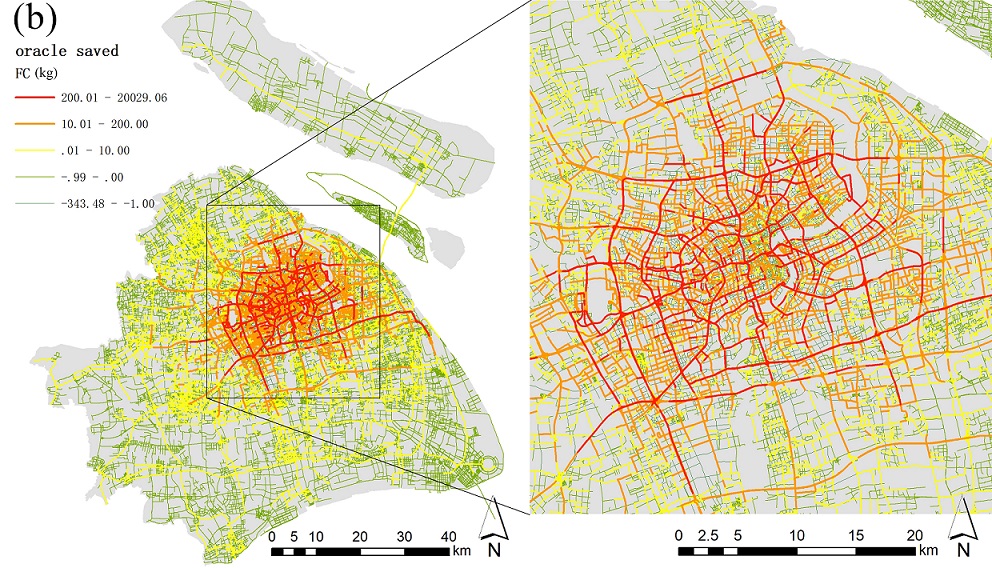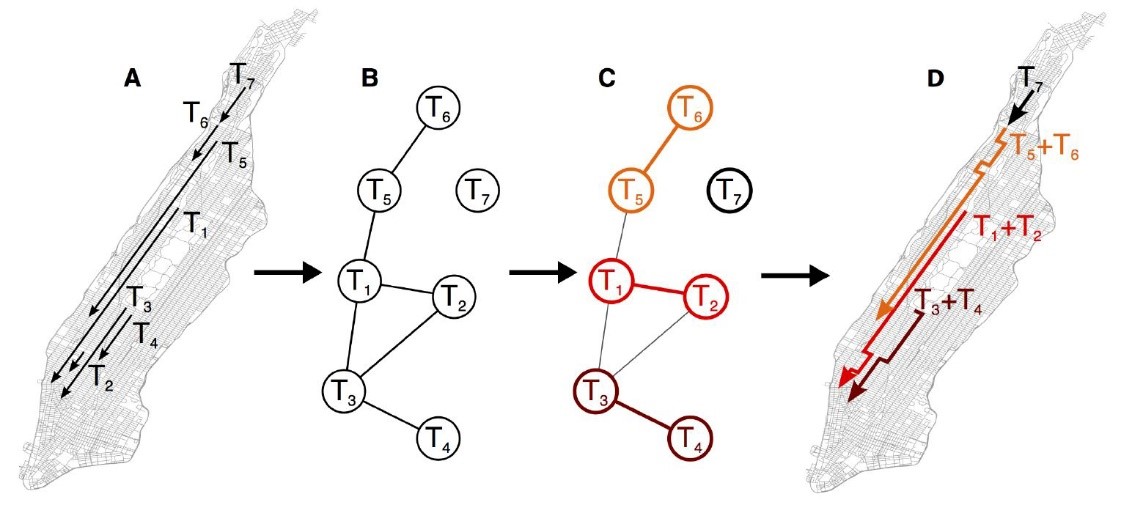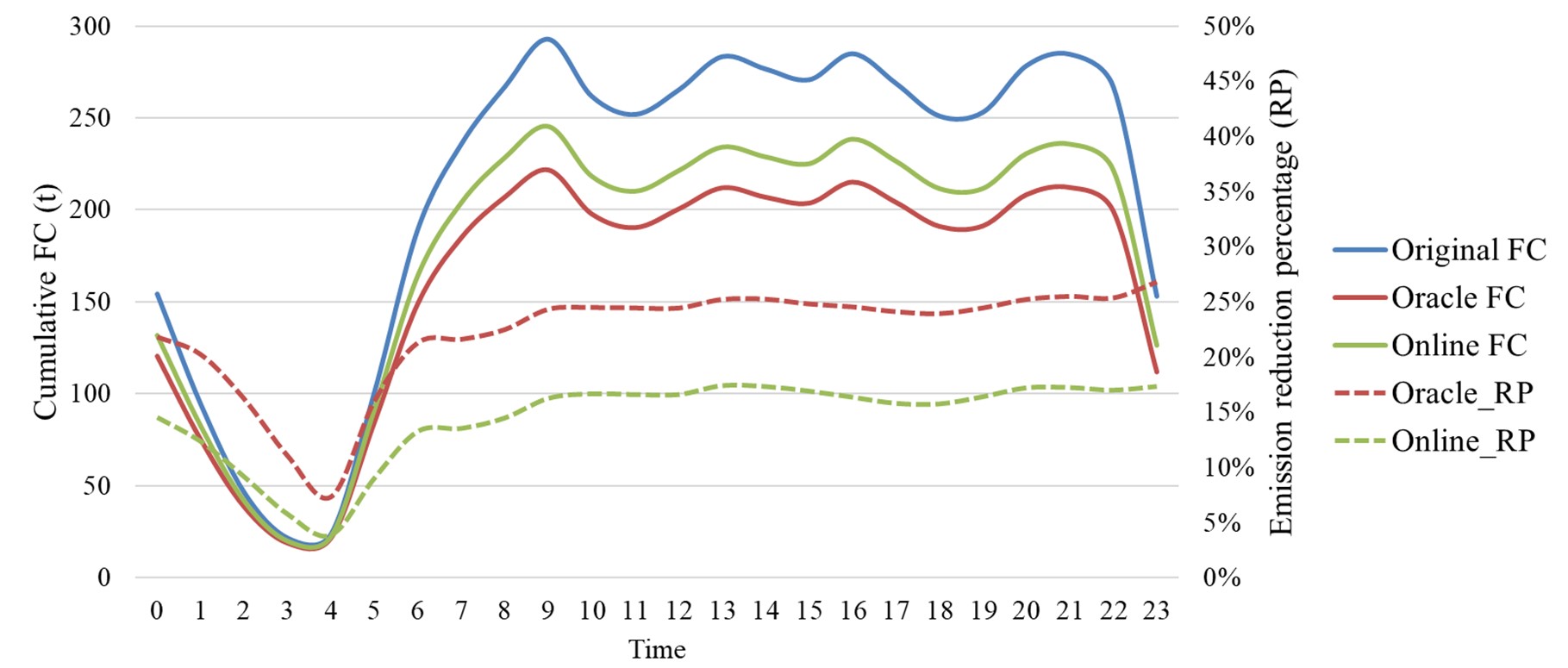
随着信息通信技术的发展,拼车、专车等共享出行模式在全球范围的逐渐成功,共享机动性(shared mobility)已被认为是与电动化(electric)、自动驾驶(autonomous)并列的三大交通发展趋势,将深刻塑造更高效和更可持续未来城市机动性模式。
Shared mobility such as carpooling and vehicle sharing is prevailing worldwide. It has been recognized as one of the three major transportation trends, along with electrification and autonomous driving. It will profoundly shape more efficient and sustainable future mobility patterns.
基于MIT Senseable City Lab 提出的“共享图模型”(Shareability Network),我们模拟了上海强生的所有出租车开展大规模拼车时,整个城市能够获得的效益。
Based on the “Shareability Network” model proposed by MIT Senseable City Lab, we simulated the benefits that Shanghai could gain from large-scale carpooling.

我们发现:在理想和现实情景下,拼车出行分别降低22.88%和15.09%的燃油使用,并同样减少相应比例的交通排放。同时,拼车还能减少在路车辆,提高交通速度,使得燃油使用进一步下降0.34%-0.96%,是一个非常客观的连带减排效果。
此外,空间分析表明拼车出行在污染排放严重的道路路段上的减排效果更为突出,促使了单中心、放射状等空间模式的产生。时间维度分析也揭示出,早高峰的减排效应呈现从混乱到逐渐规律的变化过程。这些时空模式都可以被出行的聚合效应、路网等级和拓扑结构所解释。
Using Shanghai as a case, we showed that ridesharing per se can reduce fuel-consumption (FC) by 22.88% and 15.09% in optimal and realistic scenarios, respectively, with corresponding emissions reductions. Ridesharing’s spontaneous first-order speed effect further reduces FC by 0.34%-0.96%.
Additionally, spatial analyses show that ridesharing reduces more emissions on severely polluted roads, leading to two spatial patterns; temporal analyses demonstrate patterns shifted from disorganized to organized. Both the phenomena can be explained by the aggregation of trips and the grading and topology of the roads.

